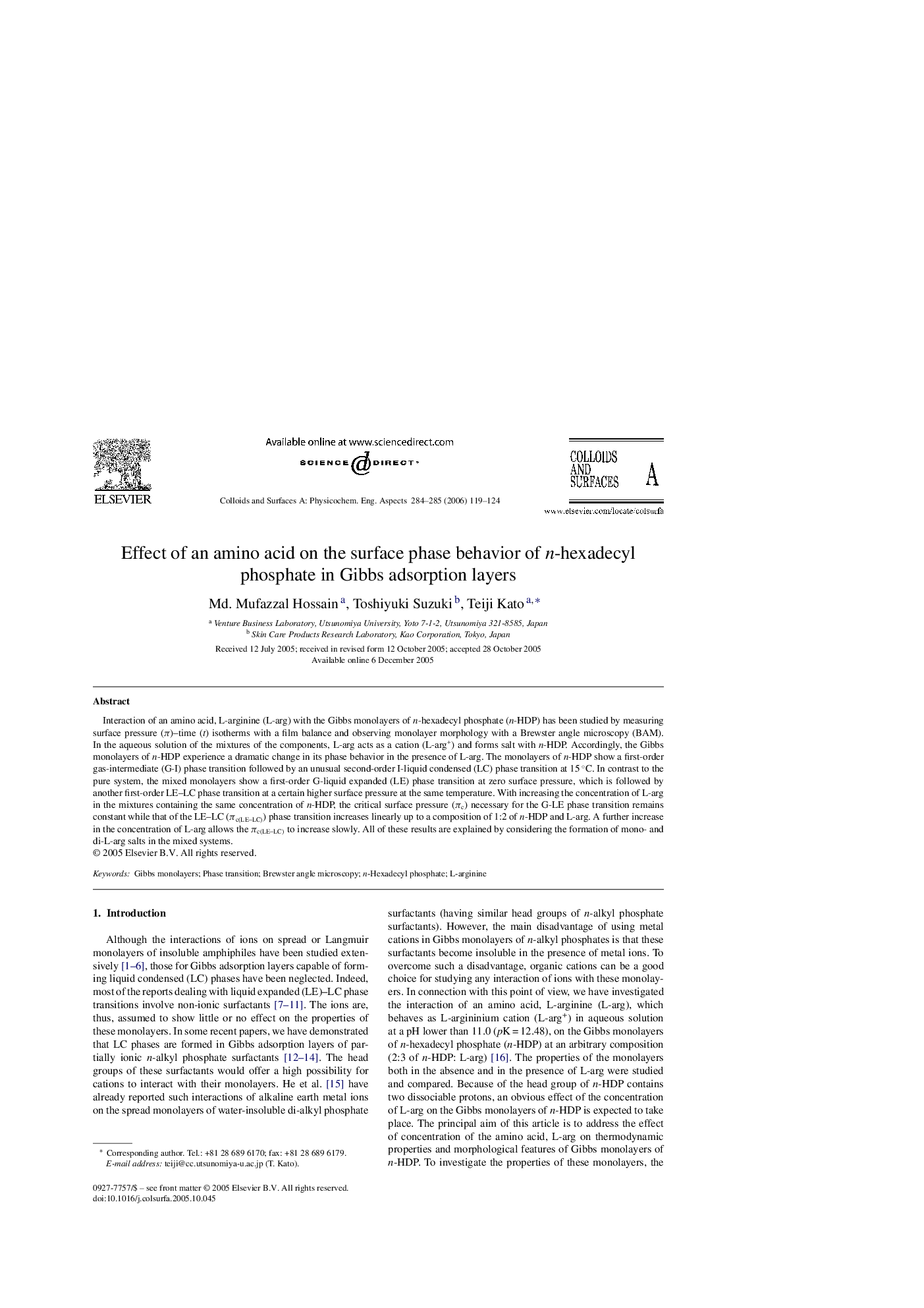| Article ID | Journal | Published Year | Pages | File Type |
|---|---|---|---|---|
| 598227 | Colloids and Surfaces A: Physicochemical and Engineering Aspects | 2006 | 6 Pages |
Abstract
Interaction of an amino acid, L-arginine (L-arg) with the Gibbs monolayers of n-hexadecyl phosphate (n-HDP) has been studied by measuring surface pressure (Ï)-time (t) isotherms with a film balance and observing monolayer morphology with a Brewster angle microscopy (BAM). In the aqueous solution of the mixtures of the components, L-arg acts as a cation (L-arg+) and forms salt with n-HDP. Accordingly, the Gibbs monolayers of n-HDP experience a dramatic change in its phase behavior in the presence of L-arg. The monolayers of n-HDP show a first-order gas-intermediate (G-I) phase transition followed by an unusual second-order I-liquid condensed (LC) phase transition at 15 °C. In contrast to the pure system, the mixed monolayers show a first-order G-liquid expanded (LE) phase transition at zero surface pressure, which is followed by another first-order LE-LC phase transition at a certain higher surface pressure at the same temperature. With increasing the concentration of L-arg in the mixtures containing the same concentration of n-HDP, the critical surface pressure (Ïc) necessary for the G-LE phase transition remains constant while that of the LE-LC (Ïc(LE-LC)) phase transition increases linearly up to a composition of 1:2 of n-HDP and L-arg. A further increase in the concentration of L-arg allows the Ïc(LE-LC) to increase slowly. All of these results are explained by considering the formation of mono- and di-L-arg salts in the mixed systems.
Related Topics
Physical Sciences and Engineering
Chemical Engineering
Colloid and Surface Chemistry
Authors
Md. Mufazzal Hossain, Toshiyuki Suzuki, Teiji Kato,
